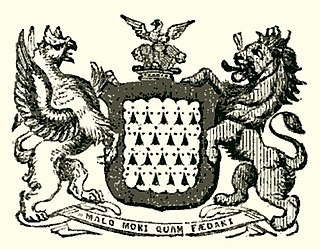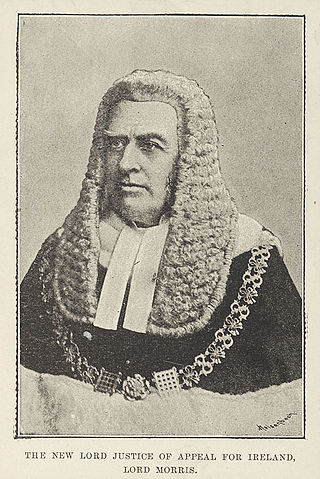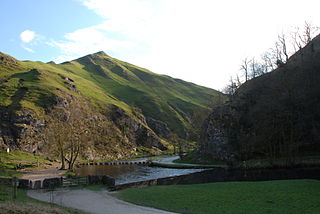
Baron Trimlestown, of Trimlestown in County Meath, is a title in the Peerage of Ireland.

The Attorney-General for Ireland was an Irish and then United Kingdom government office-holder. He was senior in rank to the Solicitor-General for Ireland: both advised the Crown on Irish legal matters. With the establishment of the Irish Free State in 1922, the duties of the Attorney-General and Solicitor-General for Ireland were taken over by the Attorney General of Ireland. The office of Solicitor-General for Ireland was abolished at the same time for reasons of economy. This led to repeated complaints from the first Attorney General of Ireland, Hugh Kennedy, about the "immense volume of work" which he was now forced to deal with single-handedly.

Rowland FitzEustace, 1st Baron Portlester was an Irish peer, statesman and judge. He was one of the dominant political figures in late fifteenth-century Ireland, rivalled in influence probably only by his son-in-law Garret FitzGerald, the "Great" Earl of Kildare.
Thomas Fleming was an Irish peer, and a member of the Parliament of Ireland of 1585. He was the son of James Fleming, and great-grandson of James Fleming, 7th Baron Slane. His mother was Ismay Dillon, daughter of Sir Bartholomew Dillon, Lord Chief Justice of Ireland and his first wife Elizabeth Barnewall; after his father's death she remarried Sir Thomas Barnewall of Trimlestown.
Robert St Lawrence, 3rd Baron Howth was a leading statesman in 15th-century Ireland who held the office of Lord Chancellor of Ireland. Through his second marriage, he was a close connection to the new Tudor dynasty, to which his son was staunchly loyal.
The High Sheriff of Meath was the British Crown's judicial representative in County Meath, Ireland, from the conquest until 1922, when the office was abolished in the new Free State and replaced by the office of Meath County Sheriff.
Sir Bartholomew Dillon was a leading Irish judge of the sixteenth century who held the offices of Chief Baron of the Irish Exchequer and Lord Justice of Ireland.
Sir William Welles was an English-born statesman and judge in fifteenth-century Ireland, who held the office of Lord Chancellor of Ireland. He was the younger brother of Lionel de Welles, 6th Baron Welles. Lionel was a prominent supporter of the House of Lancaster, who was killed at the Battle of Towton on 29 March 1461.
Sir Christopher Barnewall (1522–1575) was a leading Anglo-Irish statesman of the Pale in the 1560s and 1570s. He was the effective Leader of the Opposition in the Irish House of Commons in the Parliament of 1568–71. He is remembered for building Turvey House, where he sheltered the future Catholic martyr Edmund Campion, for his impressive tomb in Lusk Church, and for the eulogy to him in Holinshed's Chronicles, which was written by his son-in-law Richard Stanyhurst.
Sir John Cornwalsh, or Cornwalysch was an Irish judge who held the office of Chief Baron of the Irish Exchequer. His tenure was notable for the fact that he succeeded his father as Chief Baron, and for his long struggle to retain the office against a rival claimant, Michael Gryffin. He is also remembered as the builder of Dardistown Castle in County Meath.
Christopher St Lawrence, 2nd Baron Howth was an Anglo-Irish nobleman. He was a key figure in fifteenth-century Irish politics, and one of the strongest supporters in Ireland of the House of York, who seized the English Crown in 1461. His tomb can still be seen in the family chapel in St. Mary's Church, Howth.

Thomas Dowdall, also spelt Dowdale, Douedall, or Dowedall, was an Irish barrister and judge who held the office of Master of the Rolls in Ireland.
The Brotherhood of Saint George was a short-lived military guild, which was founded in Dublin in 1474 for the defence of the English-held territory of the Pale. For a short time it was the only standing army maintained by the English Crown in Ireland. It was suppressed by King Henry VII in 1494, due to his suspicions about the Brotherhood's loyalty to his dynasty. It was not an order of knighthood, although some of its individual members were knights.
Sir John Barnewall (c.1635-c.1705) was an Irish landowner, barrister and judge, who held several judicial offices, including that of Recorder of Dublin 1687-9.
Sir Thomas Fitz-Christopher Plunket (c.1407-1471) was a leading Irish lawyer and judge of the fifteenth century who held office as Lord Chief Justice of Ireland. He was an ancestor of the Duke of Wellington in the female line. His second marriage to the heiress Marian Cruise inspired the ballad The Song of Mary Cruys.
James Dillon, 1st Earl of Roscommon fought for the crown in the Nine Years' War. He was ennobled despite being a Catholic after his son Robert turned Protestant.
Peter Trevers, or Travers was an Irish barrister and judge of the fifteenth century.
Sir Jenico d'Artois, Dartas, Dartass or Dartasso was a Gascony-born soldier and statesman, much of whose career was spent in Ireland. He enjoyed the trust and confidence of three successive English monarchs, and became a wealthy landowner in Ireland.
Sir Nicholas Barnewall was an Irish judge and landowner of the fifteenth century who held office as Lord Chief Justice of Ireland. He was the ancestor of the Barnewall Baronets of Crickstown.
Baron Galtrim was an Irish feudal barony: in other words, the holder of the barony, which was hereditary in the Hussey family, was entitled to style himself Lord Galtrim, but was not entitled as of right to sit in the Irish House of Lords, although at least two holders of the title did receive a summons to sit in Parliament, and a third sat in the House of Commons. The title was created in the late fourteenth century by summons to Parliament. Use of the title lapsed in the early nineteenth century: from then on the former Lord Galtrim was usually referred to simply as "Mr. Hussey of Rathkenny".




